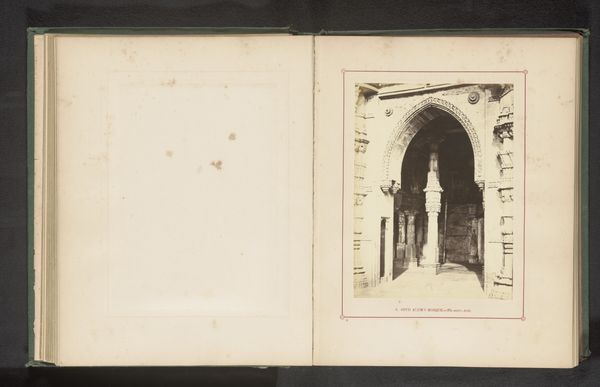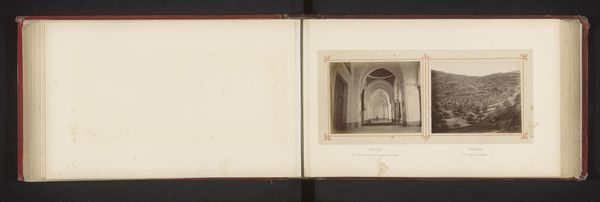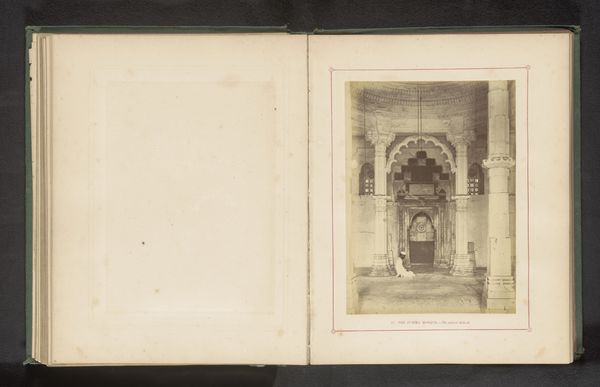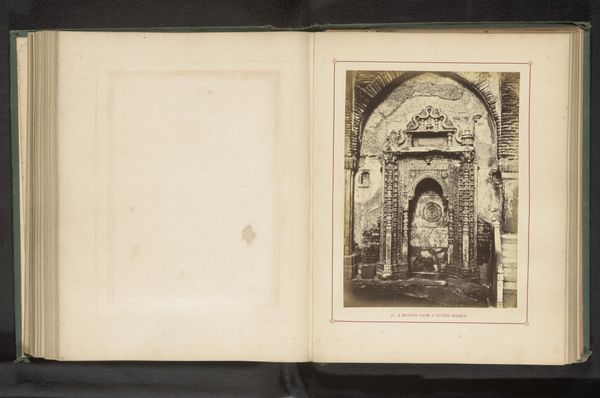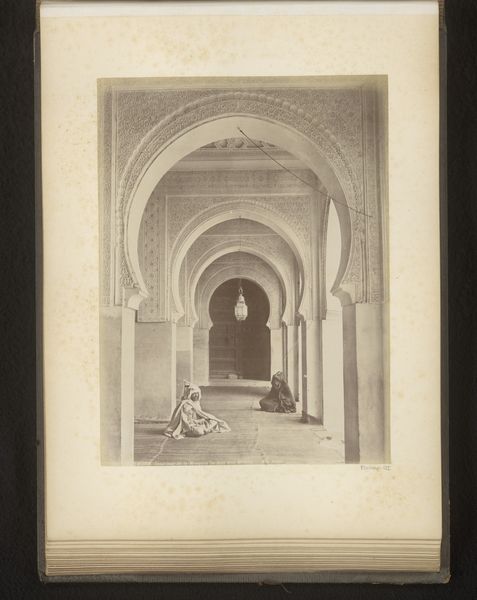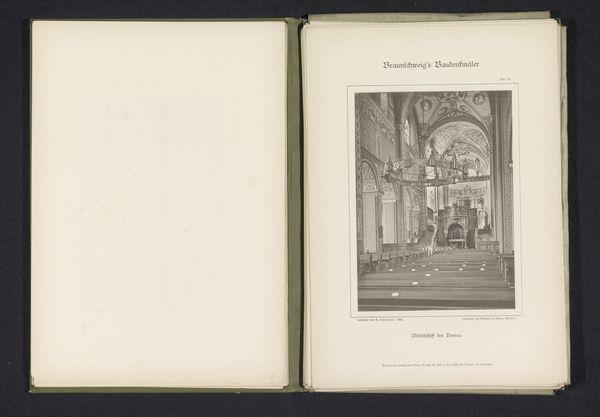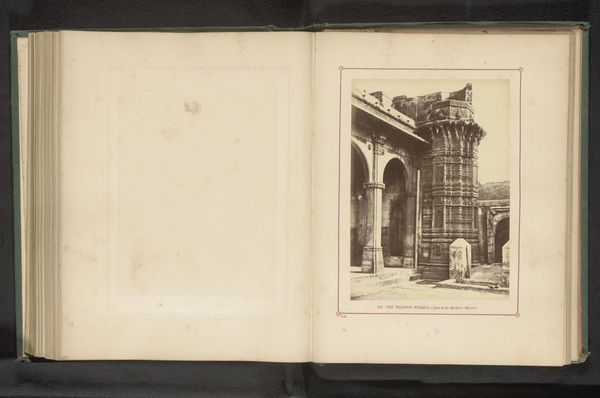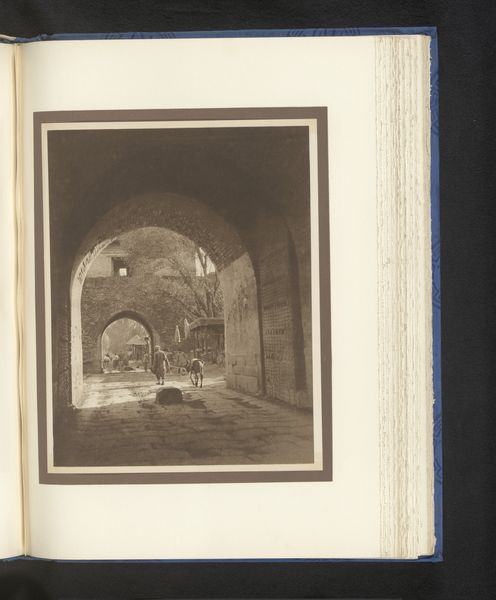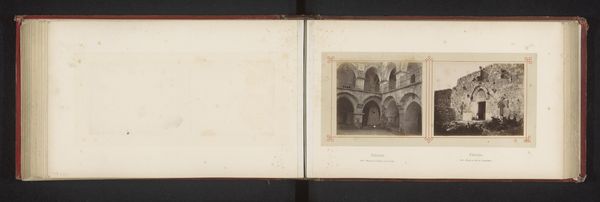
print, photography, albumen-print
# print
#
landscape
#
perspective
#
photography
#
coloured pencil
#
islamic-art
#
albumen-print
Dimensions: height 202 mm, width 149 mm
Copyright: Rijks Museum: Open Domain
Curator: Oh, there's a profound stillness here, a whispering quiet captured in this image. It's called "Interieur van de moskee van Shah-e-Alam's Roza in Ahmedabad," taken sometime before 1866 by Thomas Biggs. It's an albumen print. It feels so...empty, but also so pregnant with something. What do you see? Editor: It definitely exudes a sense of contemplative space, doesn't it? I think it's crucial to acknowledge that while the image seems to depict an empty interior, a silent religious space, it's also framing a specific architectural narrative tied to colonial encounters and representations of South Asian culture through a Western gaze. How much does this imagery exoticize rather than truly reflect a place of worship? Curator: You always bring such a vital lens to these pieces. I hadn't quite thought of it in terms of a colonial gaze. For me, the long row of arches creates this feeling of endless repetition, almost like a visual mantra leading the eye to a barely visible opening in the back. The play of light and shadow along those arches is almost musical, like a soft, echoed melody. Do you get any sense of movement or rhythm here? Editor: Absolutely. The repetition of the arches generates a distinct rhythm, mimicking perhaps the repetitive rituals of prayer or meditation performed within. The historical context complicates this rhythm, though. Colonial photography often participated in categorizing and archiving cultures it sought to control. Are we appreciating the artistry or passively consuming a tool of historical power? Curator: That's the crux of it, isn't it? I keep coming back to how it feels so solitary, like the people included are echoes themselves, faint against the grand architecture. But you’re right; perhaps the real story is the silence and what is purposely un-represented about this mosque's vibrant life. Editor: Exactly. Examining not just what's shown but what's absent—the social dynamics, the voices, the everyday lives intertwined with this space—reveals how photographs like these functioned within broader projects of colonial knowledge production. The “quiet” is deceptive. It’s curated. Curator: So the challenge is to allow myself to be moved by the aesthetic, the perspective, but remain critical of what it elides, of the narratives it subtly perpetuates? Editor: Precisely. We must remain aware and resist simplistic interpretations, and constantly question the power dynamics embedded in its creation and circulation. Curator: I appreciate that; thank you for helping me tune my vision today! Editor: The pleasure is all mine! May our questioning eyes transform how we see.
Comments
No comments
Be the first to comment and join the conversation on the ultimate creative platform.

